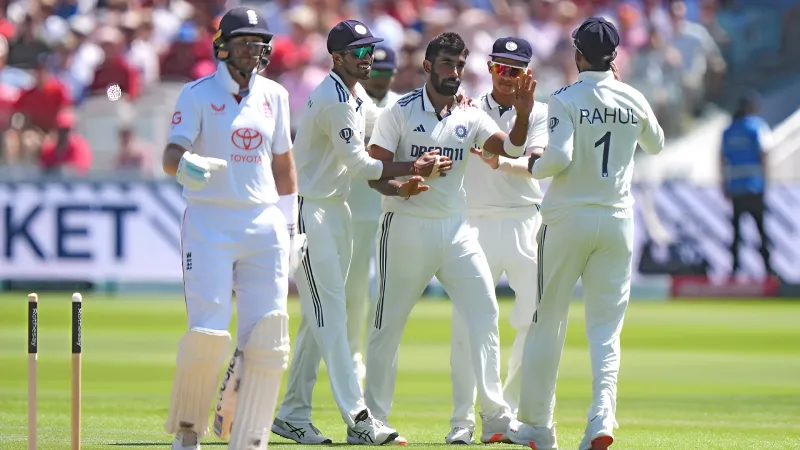There are certain situations in Test cricket when it is neither the bat nor the fast bowler that is the sole focus of attention, but rather, the ball. Day 2 of the third Test match at Lord’s had a type of madness that only Test cricket can provide – on the micro level, one change of ball changed the shape of the day, and on the macro level, with a second inspired change of ball, the entire shape of the day became unrecognizable. What had started the day on a nothing-to-lose day for India transferred into a complete meltdown for India with two extraordinary changes of the match ball. In no time at all, fans were reaching out on social media, and X (formerly Twitter) was filled with memes, reviews, and hot takes.
When Momentum Meets a Ball Change
India was flying into Day 2. In the first hour, or rather, a matter of minutes in real time, England went from 250ish to 271/7, with Stokes, Root, and Woakes all dismissed. They were the kind of spell that can break the back of an innings. But then came the moment where it wasn’t about runs or wickets; it was about leather.
The 91st over was the first ball change, and it felt odd changing the ball when it was only 10 overs old! It looked like captain Shubman Gill was not enamored by the change and even asked for another ball change, and that was only after 48 deliveries. India would have wanted something in the ballpark of the original zingy Dukes ball, but what they got was, meh, the bite was gone, the movement was gone, and more importantly, the momentum was gone.
Also read:- Why Bangladesh Cricket Still Can’t Build a Culture of Honest Conversations
Fans React: From Tactical Call to Twitter Roasts
Social media had no mercy. One fan said, “Shubman Gill’s glasses are those we used to get free with Bournvita.” Another said, “Significant change of balls has changed the game. India was all over England. Now? Less so.”
From a fan’s point of view, it appeared as though India overthought and complicated what came naturally and what was working well. India had full control, the ball was moving off the seam, it was reversing enough, and we were taking wickets, so why go away from this?
Some people defended Gill’s decision and said that any captain would make that call if the shape of the ball is off. Fair enough. However, the timing was questionable. The decision to disrupt something that was vibrantly working and changing the dynamic of the game gave England scope, and they bolted through.
England’s Counterattack and the Curious Case of the Duke’s Ball
After the second ball change, India’s bowlers lost their edge. The wayward lines, softer lengths, and even that slight swing they had been getting early on? Long gone.
England went from 271/7 to 353/7 at lunch and looks like a different team. While Smith recorded his first half-century in a Test match, Carse proved immovable, and the prospect of being bowled out very early started to drift away.
Also, up for debate, the quality of the Duke’s ball. Many were skeptical that a ball could lose shape after 10 overs. “The local tennis ball is less susceptible to changing shape,” one user jokingly said. I also saw another user comment that if we only rely on the ball gauge and not the visual context, this may not be the fairest replacement.
Nevertheless, all of this gives us some understanding of how ball durability—and the decisions regarding ball durability—can also be an element of momentum within the longer format.
To catch up on the most current news on all of your favorite thrilling cricket updates, visit Six6slive to access our comprehensive Latest News, insightful analysis, and updates. Connect with the action now to make sure you never miss out!
